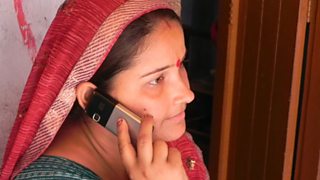Health innovation: how to spread new ideas fast?
Yvonne MacPherson and Caroline Sugg
Executive Director, ΒιΆΉΤΌΕΔ Media Action USA and Head of Advisory and Policy Team, ΒιΆΉΤΌΕΔ Media Action
In a fascinating in The New Yorker, surgeon, health researcher and writer Atul Gawande examines why some health innovations – surgical anaesthesia for example – have spread fast, while others – such as the use of antiseptics or critical childbirth practices – take years, even generations, to become accepted and save lives.
He argues that technology isn’t the answer: in an era of the iPhone and Facebook, he says, "We yearn for frictionless, technological solutions… But people talking to people is still the way that norms and standards change."
This focus on "people talking to people" as the way to affect change, however, implies it is the only kind of communication that really matters, or that decisions resulting from such human interactions operate in isolation.
And while "people talking to people" in the developing world is critical to spreading life-saving innovations, using other means of engaging people with new ideas and products is also an important way to stimulate change.
It's not a matter of either/or but both.
Media's role
Take for example the impact of mass media on influencing our behaviour and the norms that shape what we feel comfortable doing – or not doing. This is well documented in behaviour change theories as well as proven by the sheer existence of the advertising industry.
Mass media can introduce and stimulate contemplation of something entirely new. It can legitimise or highlight a neglected subject and model behaviour that we want to emulate. And it can stimulate debate of something that has long been taboo, such as sexual health.
For example, a 17-year-old listener to ΒιΆΉΤΌΕΔ Media Action's , wrote to us to say, "Abugida has helped and encouraged me to make some very important decisions. The radio programme has inspired me to discuss sexual and reproductive health with my friends at school and even with my parents. I was overjoyed when my mother declared that she had decided not to have my sisters circumcised after all [after listening to the programme]."
A argues that if harmful practices are to change it is vital that people have a common understanding of what other communities are really doing as opposed to what they think other communities are doing. If the attitudes of individual families remain private, others may infer that they support female genital mutilation/cutting, when in fact they may not. This misunderstanding may mean families cut their daughters to avoid social disapproval. The UNICEF report highlights the important role media can play here to provide information and stimulate discussion.
Complementary forms of communication
Change is too complex and media – in all its forms – too ubiquitous to conclude that just one source of information or social interaction is the most effective in every context.
A more sophisticated analysis of communication in behaviour change includes understanding how various forms of communication, from mass media exposure to interpersonal discussion, interact and perhaps strengthen one another.
Improving our understanding of how this can work is at the heart of what ΒιΆΉΤΌΕΔ Media Action does.

Reinforcing messagesΒ
In the Indian state of Bihar, for example, we are using all forms of communication β technology, mass media and βpeople talking to peopleβ to improve family health.Β
With over 82% of women in Bihar having access to a mobile phone, to train and equip 200,000 community health workers with the information they need to counsel families about maternal and child health during their face-to-face home visits.
The health messages the families hear through their mobiles and from the health workers are strengthened by radio programmes, listening groups, TV ads and street theatre. ()

A community health worker on a visit to a family with the mobile phone service Mobile Kunji.
Well-designed health innovation initiatives tend to combine interpersonal and group discussion approaches with mass media and mobile phones to achieve impact at scale.
Interpersonal discussion may be a critical last step in influencing the uptake of some health innovations. But it should not be underestimated how media and communication solutions can spark, shape and support these discussions.
Related links
ΒιΆΉΤΌΕΔ Media Action’s
Follow ΒιΆΉΤΌΕΔ Media Action on and
